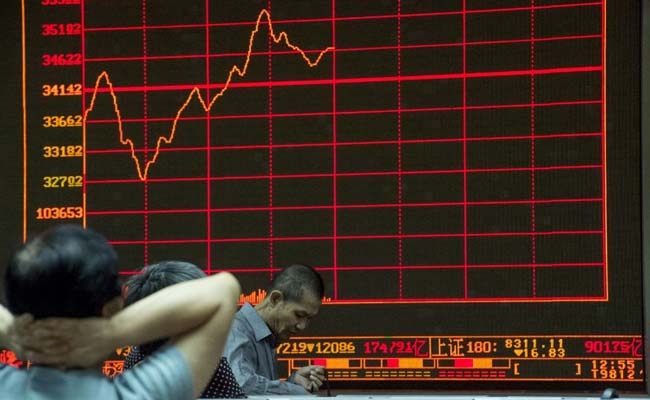Around 137 stocks have registered a fresh 52-week low on the NSE counter, while only nine stocks have hit 52-week high.The domestic currency is now quoted at 66.59 - down 76 paise per dollar. The CNX Realty index is the major loser, down nearly 7 percent at 155. The PSU Bank has slipped 5.5 percent at 3,301.

The domestic currency is now quoted at 66.59 - down 76 paise per dollar.
Now, the NSE Nifty is down 353 points at 7,946 and the BSE Sensex is down 1,142 points at 26,223.
In the broader market, the CNX Midcap and Smallcap indices have slipped 5.5-5.7 percent each at 13,018 and 5,184, respectively.
The Volatility index - India VIX is quoted at 23.95 - up almost 40 percent.
Sector-wise, the CNX Realty index is the major loser, down nearly 7 percent at 155. The PSU Bank has slipped 5.5 percent at 3,301.
The Energy, Infra and Bank Nifty indices have tumbled a 5 percent each at 7,570, 2,966 and 17,144, respectively.
The Auto, Finance, Infra and Pharma indices are the other significant losers.
Among PSU Bank stocks - Bank of India has tanked 10.5 percent to Rs. 149. Oriental Bank of Commerce has slumped 10 percent at Rs. 144.
IDBI has cracked nearly 9 percent at Rs. 61.20. Syndicate Bank and Union Bank have plunged 8.3 percent each at Rs. 91.10 and Rs. 183, respectively.
Punjab National Bank and Andhra Bank have slipped over 7.5 percent each Rs. 147 and Rs. 69.20, respectively.
Canara Bank, Bank of Baroda, SBI, Allahabad Bank and Indian Overseas Bank are the other prominent losers.
Around 137 stocks have registered a fresh 52-week low on the NSE counter, while only nine stocks have hit 52-week high.

 Finance Minister Arun Jaitley said that the Indian Economy is in revival Stage.
Finance Minister Arun Jaitley said that the Indian Economy is in revival Stage.


